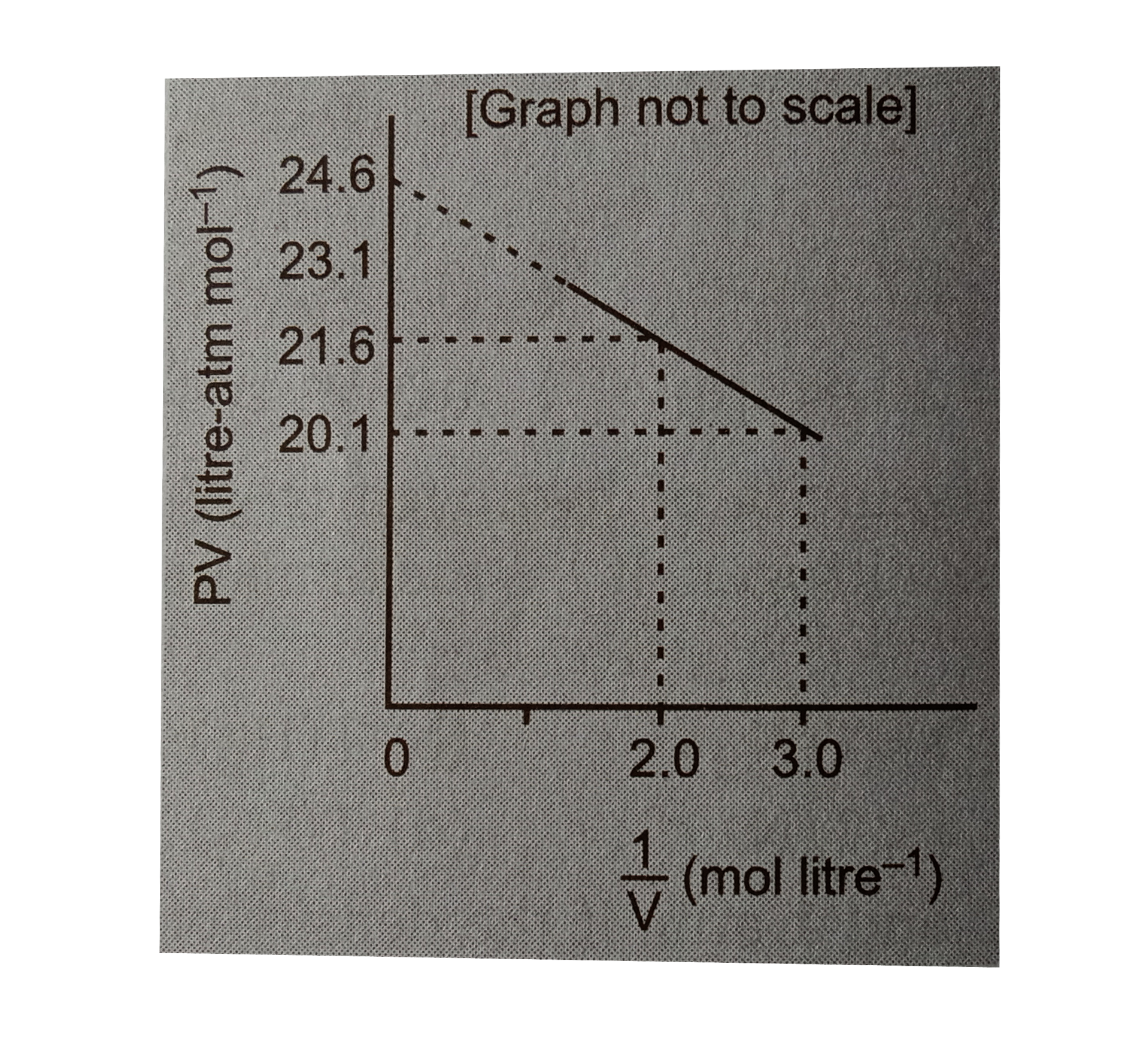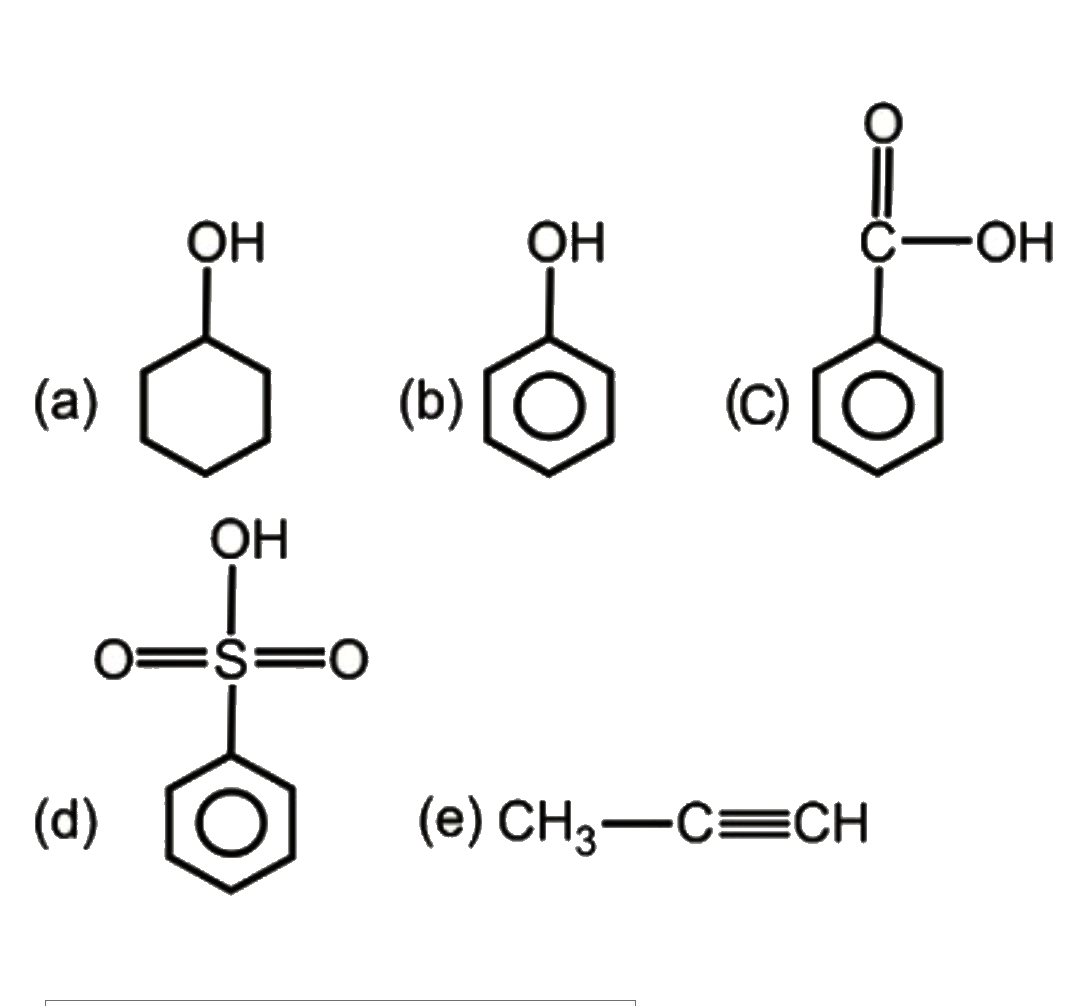Complete Solutions to CHEMISTRY of chapter JEE MOCK TEST 3 of Class 12 book with complete answers and questions
| Class 12 | CHEMISTRY |
| Chapter | JEE MOCK TEST 3 |
| NTA MOCK TEST | CHEMISTRY |
| Number Of Questions | 25 |
| Academic Year | 2023-24 |
`XeF_6` on partial hydrolysis with water produces a compound ‘X’. The same compound ‘X’ is formed when `XeF_6` reacts with silica. The compound ‘X’ Is:
View Solution`NH_(4)HS(s) hArr NH_(3)(g)+H_(2)S(g)`
In the above reaction, if the pressure at equilibrium and at 300K is 100atm then what will be equilibrium constant `K_(p)` ?
View SolutionHow many EDTA molecules are required to make an octahedral complex with a `Ca^(2+)` ion?
View SolutionWhich of the following statements is true for the reaction given below?

View SolutionElectrometallurgical process is used to extract
View SolutionThe equivalent conductivity of `0.1 M` weak acid is `100` times less than that at infinite dilution. The degree of dissociation of weak electrolyte at `0.1 M` is.
View SolutionFor one mole of a van der Waals gas when `b =0` and `T =30 K` the `PV vs1//V` plot is shown below The value of the van Waals constant a `("atm litre"^(2) mol^(-2))` is
 .
.
View SolutionAn isomer of `C_(6)H_(14)` forms three monochloro derivaties. The isomer may be- (Excluding stereo isomer)
View SolutionWhy is `Cr^(2+)` reducing and `Mn^(3+)` oxidising when both have `d^(4)` configuration ?
View SolutionThe IUPAC name of the product obtained by the oxidation of phenol with the help of chromic acid is
View SolutionThree elements X, Y and Z have atomic numbers 19, 37 and 55 respectively. Then the correct statements (s) is/are
View SolutionIn which of the following species, each atom carries same number of lone pair of electron on it?
View SolutionAn electron in an atom jumps in such a way that its kinetic energy changes from `x` to `x/9`. The change in its potential energy (magnitude) will be-
View SolutionWhich of the following compounds is not an antacid?
View SolutionHow many grams of sucrose (molecular weight 342) should be dissolved in `100 g` water in order to produce a solution with `105^(@)C` difference between the freezing point and the boiling point ? `(K_(b) =0.51^(@)C m^(-1) , (K_(f) =1.86^(@)C m^(-1))`
View Solution10 g of `MgCO_(3)` decomposes on heating to 0.1 mole `CO_(2)` and 4g MgO. The percent purity of `MgCO_(3)` is (Given that atomic weights of Mg, C and O are 24,12 and 16 u)
View SolutionThe rate of decomposition for methyl nitrite and ethyl nitrite can be given in terms of rate constant `k_(1)` and `k_(2)` respectively. The energy of activation for the two reactions are `152.30 kJ mol^(-1)` and `157.7 kg mol^(-1)` as well as frequency factors are `10^(13)` and `10^(14)` respectively for the decomposition of methyl and ethyl nitrite. Calculate the temperature at which rate constant will be same for the two reactions.
View SolutionA body centred cubic lattice is made up of hollow sphere of B. Sphere of solid A are present in hollow sphere of B. Radius of A is half of the radius of B. What is the ratio of total volume of sphere B unoccupied by A in unit cell and volume of unit cell?
View SolutionThe equilibrium constant for
`CN^(-) + CH_(3)COOH hArr HCN + CH_(3)COO^(-)` is: (Given `pK_(b)` for `CN^(-)` = 4.69 and `pK_(b)` for `CH_(3)COO^(-) = 2.25`)
View SolutionWhich of the following is a cyclic oxoacid
View SolutionAmong given compounds, how many compounds will react with `NaHCO_(3)` or soluble in `NaHCO_(3)`?

View SolutionThe critical micelle concentration (CMC) of a cationic colloidal electrolyte is `10^(-3)` M. If 1 `mm^(3)` contains `10^(13)` micelles, the number of cations making one micells is
(Given, `N_(A) = 6.0 xx 10^(23) mol^(-1)`)
View SolutionThe ammonia evolved from the treatment of 0.30 g of an organic compound for the estimation of nitrogen was passed in 100 mL of 0.1 M sulphuric acid. The excess of acid required 20 mL of 0.5 M sodium hydroxide solution for complete neutralization. The percentage nitrogen in the organic compound is
View SolutionThe ratio `K_(p)` to `K_( c)` of a reaction is 24.63 L atm `mol^(-1)` at `27^(@)` C. If heat of reaction at constant pressure is 98.8 kcal, what is the heat of reaction (in kcal) at constant volume?
View SolutionThe total number of compounds having at least one bridging oxo group among the molecules given below is
`N_(2)O_(3), N_(2)O_(5), P_(4)O_(6), P_(4)O_(7), H_(4)P_(2)O_(5), H_(5)P_(3)O_(10), H_(2)S_(2)O_(3), H_(2)S_(2)O_(5)`
View Solution
CHEMISTRY questions and complete solutions for chapter JEE MOCK TEST 3 of NTA MOCK TESTS of Class 12